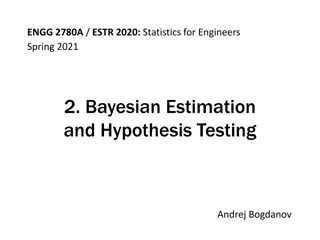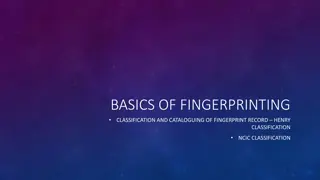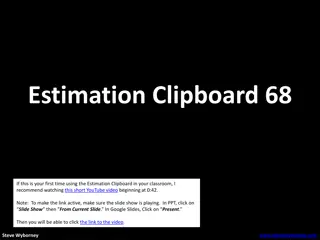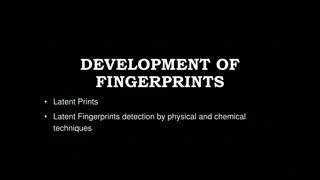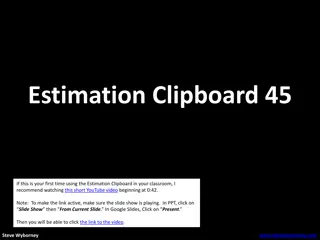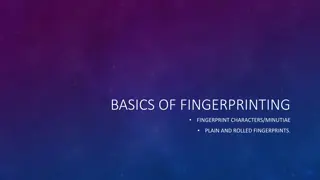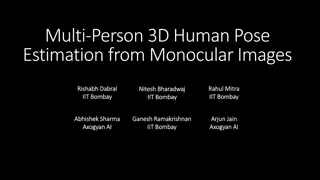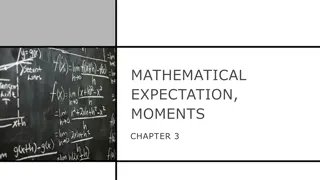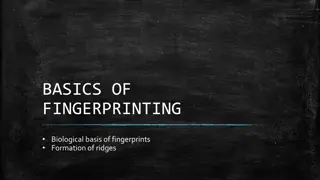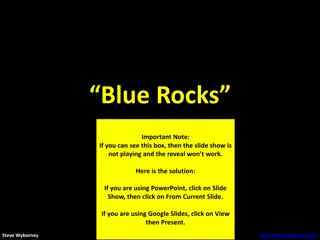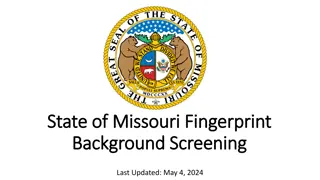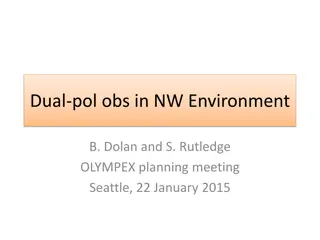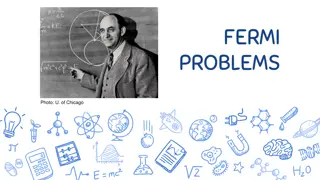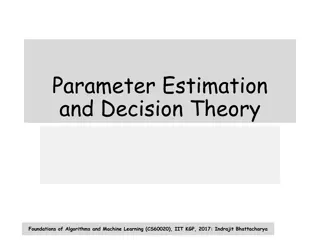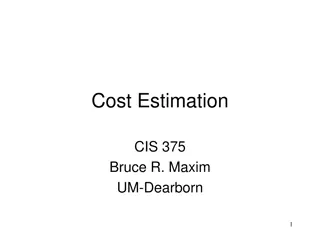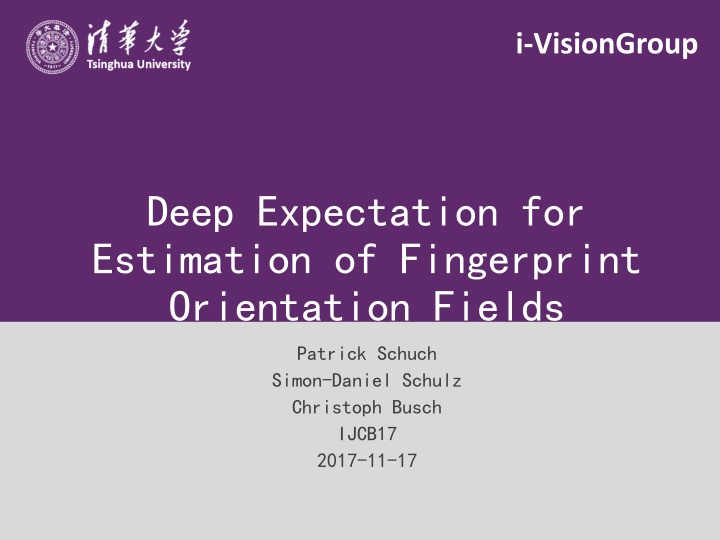
Estimation of Fingerprint Orientation Fields and Deep Expectation Method
Explore the research on fingerprint orientation field estimation and the innovative Deep Expectation method, highlighting the use of ConvNets for superior regression performance. Discover insights on classification, regression, and network layout optimizations for improved results in fingerprint analysis.
Download Presentation

Please find below an Image/Link to download the presentation.
The content on the website is provided AS IS for your information and personal use only. It may not be sold, licensed, or shared on other websites without obtaining consent from the author. If you encounter any issues during the download, it is possible that the publisher has removed the file from their server.
You are allowed to download the files provided on this website for personal or commercial use, subject to the condition that they are used lawfully. All files are the property of their respective owners.
The content on the website is provided AS IS for your information and personal use only. It may not be sold, licensed, or shared on other websites without obtaining consent from the author.
E N D
Presentation Transcript
i-VisionGroup Deep Expectation for Estimation of Fingerprint Orientation Fields Patrick Schuch Simon-Daniel Schulz Christoph Busch IJCB17 2017-11-17 i-VisionGroup
Intro DEX: Deep Expectation 2015 ICCV workshop 2016 IJCV Deep Expectation of Real and Apparent Age from a Single Image Without Facial Landmarks classification ConvNets can be superior to regression ConvNets even on such regression problems 2 i-VisionGroup
Intro Fingerprint Orientation Estimation (FOE): Central processes in feature extraction for fingerprints Challenging on low quality 3 i-VisionGroup
Intro Benchmark: FVC-ongoing Deep learning has provided promising results 4 i-VisionGroup
Intro Five questions regarding ConvnetOF whether the proposed use of Deep Expectation can outperform Regression or Naive Classification how generalization can be achieved despite this imbalance whether there is a better layout of the network for FOE an appropriate dimensioning for a ConvNet for FOE How the foreground masking provided by FVC-ongoing improves performance 5 i-VisionGroup
Proposed method Deep Expectation: In order to achieve good regression performance using a classification approach, the regression nature can be encoded by establishing a relation between the classes. The idea is to avoid a winner-takes-all policy by using a weighting strategy 6 i-VisionGroup
Proposed method Double angle for phase shift 7 i-VisionGroup
Experiments & Results Layout of ConvNetOF 8 i-VisionGroup
9 i-VisionGroup
Q1:Prediction Mode Regression or classification or DEX? Regression: Original layout of ConvNetOF Naive Classification: Layout like ConvNetOF but the final output layer has 256 neuron - one for each orientation class. The training costs were based on cross-entropy of the 256 output neurons Implicit Deep Expectation: We took the trained Naive Classification model and estimated the fingerprint orientation field by Deep Expectation when testing. Explicit Deep Expectation: Same layout as Naive Classification but the training cost function depended directly on the orientation estimation carried out in a Deep Expectation manner. 10 i-VisionGroup
11 i-VisionGroup
Q2:Regularization Limited training data Additional data: worse performance (discrepancies in marking the ground truth) Some common methods for regularization Weight Decay Drop out Affine Data-Augmentation Batch Normalization & Batch Size Gaussian Noise Gamma Correction 12 i-VisionGroup
13 i-VisionGroup
Q3:Model layout Inception Modules: from GoogLeNet 3x3 Cascades: replace larger kernels Dimension Reduction: add 1x1 convlayers AlexNet: dropped the last pooling layers 14 i-VisionGroup
3x3 cascades: too bad performance 15 i-VisionGroup
Q4:Model size Especially the GP layers and the FC layers seemed to be oversized Several attempts: 50% of all Neurons 50% Fully Connected Slightly Smaller GPs: 32 & 11x11 instead of 49 & 13x13 2 GP Blocks 4 GP Blocks 16 i-VisionGroup
17 i-VisionGroup
Q5:Mask 18 i-VisionGroup
Final: DEX-OF 19 i-VisionGroup
Thanks for listening Q&A 20 i-VisionGroup

